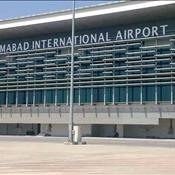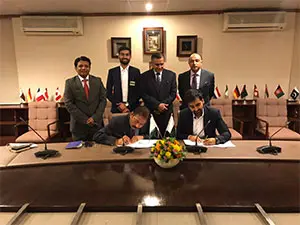
Australia's immigration landscape is undergoing its most significant transformation in years, driven by a new visa processing directive in store for Australia aimed at enhancing integrity, addressing critical skill shortages, and realigning migration with national economic goals. These changes, largely rolling out through 2024 and 2025, impact virtually every visa stream, from skilled workers to international students. Prospective migrants and employers must grasp the details of this extensive visa processing directive in store for Australia to ensure successful applications and compliance with the new requirements.
The core of this reform is the prioritisation of highly skilled migrants who can contribute immediately to key sectors, alongside measures to streamline processes and curb exploitation. We will dive into the most pivotal changes, focusing on the new work and salary thresholds, and the substantial adjustments to the student sector.
The New Era of Skilled Migration: Introducing the Skills in Demand (SID) Visa
The most transformative element of the visa processing directive in store for Australia is the introduction of the Skills in Demand (SID) Visa, which formally replaces the outdated Temporary Skill Shortage (Subclass 482) visa. This new visa is designed to be more agile, offering clearer pathways to permanent residency (PR) and greater job mobility for skilled workers. The extensive nature of the Skills in Demand (SID) Visa reform necessitates careful study.
The Skills in Demand (SID) Visa is structured around three key streams, each defined by salary and occupation:
Specialist Skills Stream: For high-income earners meeting the Specialist Skills Income Threshold (SSIT). This stream is aimed at attracting top-tier global talent.
Core Skills Stream: For the vast majority of skilled workers whose occupations are listed on the Core Skills Occupation List (CSOL) and who meet the Core Skills Income Threshold (CSIT).
Labour Agreement Stream: For employers with specific, niche needs that cannot be met through the standard streams.
Benefits of the Skills in Demand (SID) Visa
The Skills in Demand (SID) Visa provides tangible improvements for workers compared to its predecessor:
Extended Stay: The Skills in Demand (SID) Visa typically grants a maximum stay of four years.
Reduced PR Pathway Time: Time spent with different approved sponsors on the Skills in Demand (SID) Visa can now be credited toward the permanent residency requirement, a major boost for mobility.
Grace Period Extension: Workers on the Skills in Demand (SID) Visa who cease employment now have 180 days (increased from 60 days) to find a new sponsor or secure an alternative visa, significantly reducing pressure and potential exploitation.
Reduced Work Experience: The minimum work experience requirement for the Skills in Demand (SID) Visa has been reduced from two years to one year of full-time experience within the last five years.
The goal of the Skills in Demand (SID) Visa is to ensure that temporary skilled migration is precisely targeted to address acute shortages, a foundational element of the new visa processing directive in store for Australia.
Impact on Finances: The Rise of Visa Application Charges (VAC) Increase and Skilled Migration Income Threshold (TSMIT/CSIT)
The new visa processing directive in store for Australia brings substantial financial changes that migrants must factor into their planning, driven by significant increases in application fees and salary thresholds.
1. Significant Visa Application Charges (VAC) Increase
Effective from July 1, 2025, the government implemented a wide-ranging Visa Application Charges (VAC) Increase across multiple visa subclasses. This increase reflects the government's aim to maintain an efficient and sustainable immigration system, but places a heavier financial burden on applicants.
| Visa Subclass | Previous Fee (Est.) | New Visa Application Charges (VAC) Increase (Est. AUD) | % Change (Approx.) |
|---|---|---|---|
| Student Visa (Subclass 500) | |||
| Skilled Visas (Subclass 189/190) | |||
| Visitor Visa (Subclass 600) |
The most notable adjustment is the steep Visa Application Charges (VAC) Increase for the Student Visa, signalling the government's intention to manage the size and composition of the international student cohort.
2. Higher Skilled Migration Income Threshold (TSMIT/CSIT)
A central feature of the new visa processing directive in store for Australia is the indexation and increase of the minimum salary requirements for sponsored skilled workers. This move ensures that skilled migrants are compensated fairly and helps prevent salary undercutting of Australian workers.
| Threshold Name | Previous Rate (AUD) | Skilled Migration Income Threshold (TSMIT/CSIT) (Effective July 1, 2025) | Visa Stream |
|---|---|---|---|
| Core Skills Income Threshold (CSIT) | Skills in Demand (Core Stream) | ||
| Specialist Skills Income Threshold (SSIT) | Skills in Demand (Specialist Stream) |
The mandatory new Skilled Migration Income Threshold (TSMIT/CSIT) of $76,515 applies to the Core Skills stream and the Temporary Skilled Migration Income Threshold (TSMIT) itself. This sets a high bar, ensuring the migration system focuses on highly valued skills. Employers must now meet this higher Skilled Migration Income Threshold (TSMIT/CSIT) when nominating workers under the new Skills in Demand (SID) Visa.
Student Visa Changes: Processing Limits and The End of Onshore Visa Hopping
The student sector is facing unprecedented change under the new visa processing directive in store for Australia, reflecting government efforts to reduce net overseas migration.
New Student Visa Processing Limits
A significant visa processing directive in store for Australia is the introduction of a new "go-slow" policy governed by Ministerial Direction 111. This directive effectively creates a Student Visa Processing Limits system without enacting hard legislative caps:
Threshold Trigger: The Department of Home Affairs is instructed to prioritise visa processing for educational institutions until they reach a threshold (often 80%) of their assigned Overseas Student Commencements (NOSC) allocation.
The "Go-Slow": Once this Student Visa Processing Limits threshold is met, the processing of new applications for that institution shifts from "high priority" to a slower queue, creating significant delays for prospective students applying to popular institutions.
Financial Scrutiny: Furthermore, the financial capacity requirement for Student Visa Processing Limits applicants has been strictly increased to approximately $29,710, aiming to ensure students can genuinely support themselves.
The End of Onshore Visa Hopping
The government is cracking down on the practice of End of Onshore Visa Hopping—where individuals enter Australia on a temporary visa (like a Visitor Visa) and then switch to a Student Visa purely to prolong their stay. This key part of the new visa processing directive in store for Australia includes:
Visitor visa (Subclass 600) holders are generally barred from applying for a Student visa (Subclass 500) while they are onshore.
Temporary Graduate visa (Subclass 485) holders are also restricted from applying for a Student visa (Subclass 500) onshore.
The clear aim of the End of Onshore Visa Hopping policy is to restore integrity to the Student Visa program and ensure applicants use the visa for its intended purpose: genuine study.
Attracting Elite Talent: The National Innovation Visa (NIV)
Complementing the Skills in Demand (SID) Visa, the visa processing directive in store for Australia has replaced the Global Talent Visa (Subclass 858) with the National Innovation Visa (NIV).
The National Innovation Visa (NIV) is a permanent residency pathway designed for global experts and exceptionally talented individuals who can drive economic growth in Australia's priority sectors, such as renewable energy, ICT, and high-tech manufacturing.
Key features of the National Innovation Visa (NIV):
It simplifies the previous framework, focusing purely on exceptional achievement.
It removes certain bureaucratic endorsement requirements.
It aligns the selection criteria with specific sectors deemed vital to Australia's national interest.
The National Innovation Visa (NIV) forms a critical pillar in Australia's long-term strategy to build a future-focused, skills-based economy.
Conclusion and Next Steps for Migrants
The visa processing directive in store for Australia for 2025 and beyond represents a systemic reset for Australian immigration. The changes are designed to attract skills, ensure fair wages via the higher Skilled Migration Income Threshold (TSMIT/CSIT), enforce integrity with the End of Onshore Visa Hopping rules, and manage temporary migration volumes through the new Student Visa Processing Limits and Visa Application Charges (VAC) Increase. The new Skills in Demand (SID) Visa is the cornerstone of the skilled migration program, offering a much-needed clear and protected pathway to permanent residence.
Individuals and employers planning to engage with the Australian system must:
Re-evaluate Eligibility: Check if your salary meets the new Skilled Migration Income Threshold (TSMIT/CSIT) requirements.
Budget for Costs: Account for the sharp Visa Application Charges (VAC) Increase, especially for the Student Visa.
Plan Wisely: Note the End of Onshore Visa Hopping restrictions and plan your application from offshore if intending to switch from a temporary to a Student visa.
Would you like me to create a detailed FAQ section addressing the most common questions about the Skills in Demand (SID) Visa?
More Travel News
-
 20-May-2020Top 5 Things Pakistani Airports Should Learn And Improve
20-May-2020Top 5 Things Pakistani Airports Should Learn And Improve -
 13-Sep-2025PIA Halts Canada Flights for Three Weeks as Boeing 777s Go Into Overhaul
13-Sep-2025PIA Halts Canada Flights for Three Weeks as Boeing 777s Go Into Overhaul -
 27-Mar-2020How to Protect ourselves from Coronavirus During Traveling
27-Mar-2020How to Protect ourselves from Coronavirus During Traveling -
 30-Aug-2019International road tour: 5 things to know before renting a car abroad
30-Aug-2019International road tour: 5 things to know before renting a car abroad -
 02-Feb-2020How Traveling Broadens My Mind
02-Feb-2020How Traveling Broadens My Mind -
 13-Apr-2025PIA Privatization Faces Further Delays, Deadline Extended to December 2025
13-Apr-2025PIA Privatization Faces Further Delays, Deadline Extended to December 2025 -
 25-Jan-2022Schengen Visa from Pakistan and countries can you visit with it
25-Jan-2022Schengen Visa from Pakistan and countries can you visit with it -
 19-Aug-2025A Unique Confluence: Performing Umrah During Easter Week
19-Aug-2025A Unique Confluence: Performing Umrah During Easter Week -
 15-Apr-2025Uzbekistan sets date for visa on arrival service for Pakistani tourists.
15-Apr-2025Uzbekistan sets date for visa on arrival service for Pakistani tourists. -
 27-Apr-2024A beginner’s guide to top archaeological sites in Pakistan
27-Apr-2024A beginner’s guide to top archaeological sites in Pakistan -
 06-Dec-2019Best Places To Visit In Northern Areas of Pakistan During Snowfalling
06-Dec-2019Best Places To Visit In Northern Areas of Pakistan During Snowfalling -
 02-Nov-2021The 15 day mandatory interval between two Umrah has been cancelled
02-Nov-2021The 15 day mandatory interval between two Umrah has been cancelled
